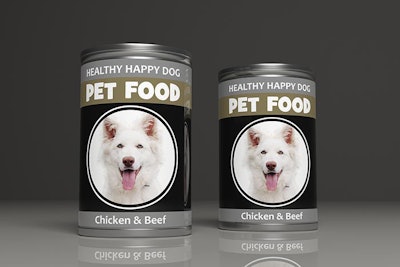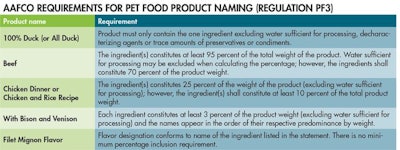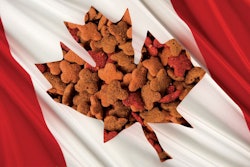
As we have discussed previously, the claims pet food companies make on their packaging can sometimes be confusing and often can be downright misleading. Through the series “Navigating pet food product claims,” we have focused on product claims, how they are backed by science (or lack thereof) and how they are regulated by the different governmental and non-governmental agencies. Today, we will focus on product naming and what it tells you about the pet food.
Today’s product names do not necessarily portray what is in the product
Historically, it was easy to understand the purpose of a pet food by phrases within its name (e.g., Hairball Control) and even the ingredients that made up a majority of the food (e.g., Chicken and Rice Recipe). Nowadays, companies try to romanticize their products with naming. Some companies name them by regions (e.g., Pine Forest Grain-Free or Big Game Recipe). Others name based on absence of ingredients (e.g., Grain-Free Adult Recipe and Holistic Garden of Vegan Recipe), while some companies try to focus on multiple benefits (e.g., Synergy Formula).
Although the product name seems romanticized and sometimes peculiar, what does it tell you about what is in the bag? Does Pine Forest Grain-Free smell like a pine forest when you open the bag? Or do these products simply romanticize the product because it does not meet certain thresholds for proper Association of American Feed Control Officials (AAFCO) product naming? To gain a better understanding, let us first focus on AAFCO naming criteria.
Bringing it all together
As discussed, product naming today doesn’t tell you very much about the product formulation. In Table 1, I provide the requirements for product naming per AAFCO. As you can clearly see, there are strict guidelines for product naming based on the percentage inclusion of the ingredients utilized in the products. These guidelines were developed to prevent false and misleading claims; however, companies have identified a loophole based on marketing and romanticizing the product names.

Table 1. The Association of American Feed Control Officials (AAFCO) has strict guidelines for pet food product naming based on the percentage inclusion of the ingredients utilized in the products.
Table 2 shows an example that is completely acceptable by today’s requirements. Notice I chose the Blue Ridge Mountains to pay tribute to my alma mater, Virginia Polytechnic Institute and State University; however, I didn’t use turkey as an ingredient (Go Hokies!).

Table 2. Both of these ingredient statements meet AAFCO naming requirements, despite the different order of listing for deboned venison.
In the above example, the naming for both ingredient statements is completely acceptable; however, the highlighted ingredient “with venison” is clearly in two different positions. In statement No. 2, venison is included at 3 percent, which meets AAFCO requirements. Now, you may be looking at statement No. 1 and scratching your head trying to figure out why the naming is the same. In this situation, I formulated venison to be the lead ingredient at 15 percent, with the remaining ingredients falling below 15 percent. Since I don’t want to call my product Venison and Beef Meal (or Chicken Meal) Recipe, I decided to utilize “with Venison” in my product name. If I were to include venison at 25 percent of the formula, I would have gladly named it Venison Recipe (and likely charged a higher premium).
So, what does a product name tell you about a food?
Using the examples I show in Table 2, the answer is absolutely nothing. If you are one of the companies doing this type of marketing and naming, it clearly lacks transparency. If you have been following my blog on debunking myths and misconceptions, then you are aware of the types of claims that companies make and how they can be misleading, whether intentionally or not. I believe as an industry we can do a better job in being transparent with product naming and claims.
Next topic: Do AAFCO feeding trials matter?
Next time we will discuss, “Do AAFCO feeding trials matter?” If there are topics you would like to have discussed, feel free to comment below or reach out via LinkedIn: www.linkedin.com/in/ryanyamka.
Resources
Association of American Feed Control Officials. 2017 Official Publication. https://www.aafco.org/resources/official-publication/


















